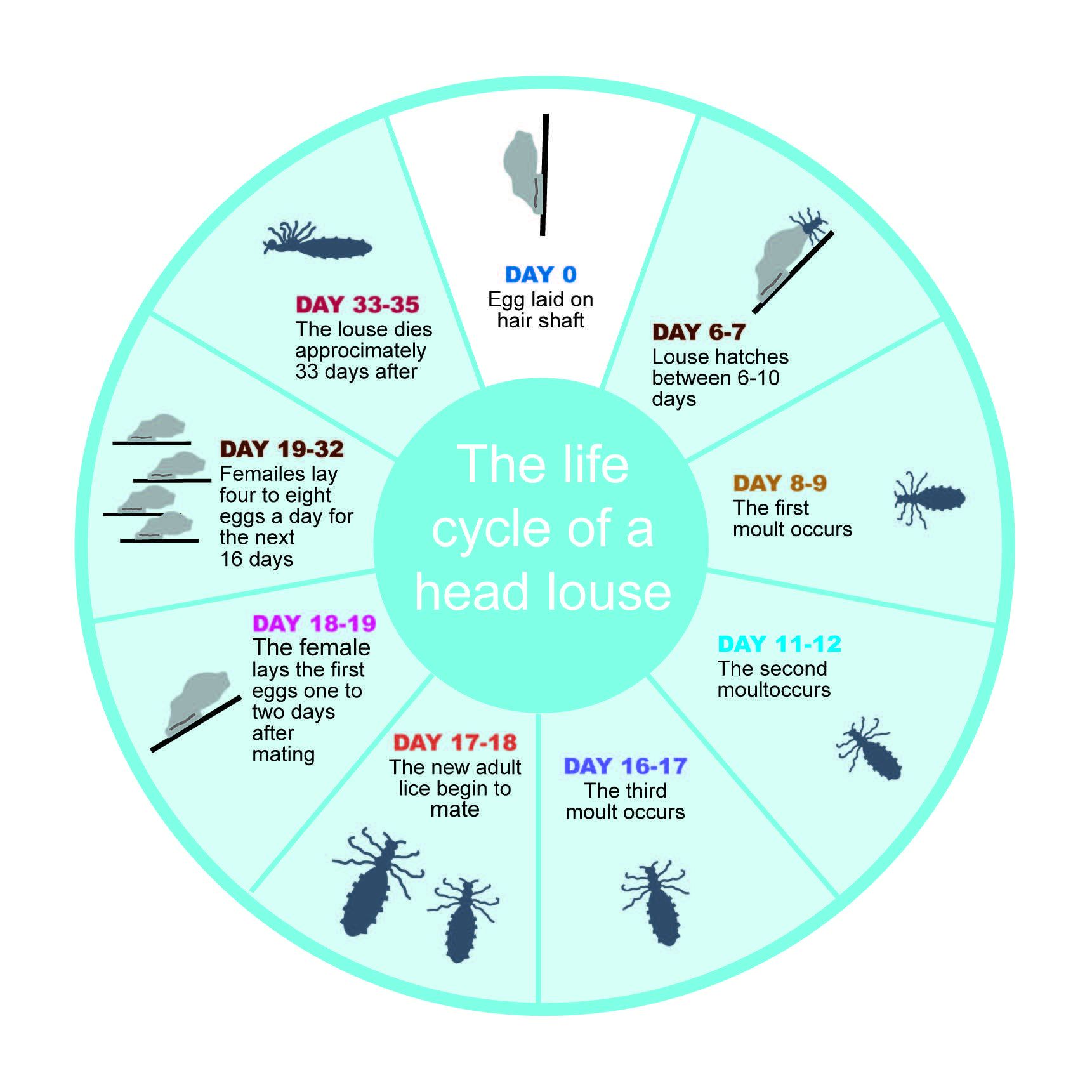Head lice
Disclaimer
These guidelines have been produced to guide clinical decision making for the medical, nursing and allied health staff of Perth Children’s Hospital. They are not strict protocols, and they do not replace the judgement of a senior clinician. Clinical common-sense should be applied at all times. These clinical guidelines should never be relied on as a substitute for proper assessment with respect to the particular circumstances of each case and the needs of each patient. Clinicians should also consider the local skill level available and their local area policies before following any guideline.
Read the full PCH Emergency Department disclaimer.
|
Aim
To guide staff with the assessment and management of head lice.
Risk
Failure to follow this guideline may result in inadequate treatment of head lice.
Background6
Pediculus humanus var. capitis is an obligate human parasite.
- Spread is mainly through head to head contact – lice can move from one head to another in seconds.
- Spread via fomites is probably low.
- Pruritus occurs in response to louse saliva, but may take several weeks to develop.
- Recurrent infection may result in skin desensitisation and little itch.
- Pruritus results in scratching, with secondary folliculitis and impetigo.
- Eggs (nits) are visible firmly attached to hair shaft, usually within 1cm of scalp and require manual removal.
Life cycle
Lifecycle of head lice

Management
- There are two main management options:
- Insecticide
- Mechanical removal (10 day conditioner method)
- Insecticides: none can guarantee to kill all eggs – those not killed or removed manually will hatch 7-10 days after being laid 4
- An important part of insecticide management involves manual removal of eggs with a ‘nit comb’ after treatment with an insecticide.
- Metal ‘nit combs’ are probably superior, however, children with coarse hair may require a plastic comb with slightly wider spaces between the teeth.
- The addition of hair conditioner prior to combing may ease the process.
- Risk of transmission via fomites is probably low but washing bed linen in hot wash (60°C) and sun drying is recommended.
- Close contacts should be checked for evidence of infestation, and treated at the same time.
- Resistance to pyrethrins has been reported internationally, therefore it is appropriate to use a different type of insecticide if the infestation is not adequately treated or recurs.
Medications
Insecticides: Advised to use in conjunction with conditioner treatment.
Malathion:1 - 0.5% lotion or 1% foam
- 6 months – 18 years
- Completely cover entire scalp. Repeat treatment after 7–10 days.
- Foam - Advise parents to refer to the specific directions on the packaging.
- Lotion - Advise parents to refer to the specific directions on the packaging.
- Avoid contact with eyes, lips and inside nostrils.
- Family members with live head lice should be treated at the same time.
- Children can be sent back to school after the first treatment.
- Do not use in pregnancy.
Dimeticone 4%2 - containing preparations:
- Available over the counter.
- Product information not available for children under 6 months of age.
- Apply to dry hair (completely cover entire hair length) and scalp. Allow hair to dry naturally. Wash out with usual shampoo after the time specified in the instructions (see package insert for full details). Use a fine-tooth comb to remove eggs and dead lice.
- Repeat treatment after 7 days.
- Effective against insecticide-resistant lice (resistance to dimeticone is unlikely).
- Avoid contact with eyes, lips and inside nostrils.
- Family members with live head lice should be treated at the same time.
- Children can be sent back to school after the first treatment.
The 10 Day Conditioner Method 8,9:
- The saturation of dry hair with hair conditioner (any type) will immobilise fast moving lice, allowing manual removal with a nit comb.
- The procedure must be repeated daily for 10 days to ensure removal of new lice as they hatch. (40% success rate when used alone.)10
- Examine combings on white paper.
- The presence of dark adult lice (hatchlings are paler) after day 1 means that the process must be restarted as this represents a new infestation and new eggs are likely to have been laid.
- Concentrate on removal of eggs closest to scalp as those >1 cm from scalp are likely to already be hatched or dead.
- Check for re-infestation after 4 weeks.
- A magnifying glass and using white coloured conditioner make lice easier to see.
There is no evidence that other products are effective. E.g. tea tree oil, sassafras oil.
References
- AMH, Children’s Dosing Companion, modified July 2021 Australian Medicines Handbook Pty Ltd Malathion Last modified: July 2021. Cited 4 November 2021. Available from: https://childrens-amh-net-au.pklibresources.health.wa.gov.au/monographs/malathion
- AMH, Children’s Dosing Companion, modified July 2021 Australian Medicines Handbook Pty Ltd Dimeticone. Last modified: July 2021. Cited 4 November 2021. Available from: https://childrens-amh-net-au.pklibresources.health.wa.gov.au/monographs/dimeticone
- Centre for Disease Control and Prevention, Head Lice, Life Cycle, Last Updated: 11 September 2019. Cited 10 November 2021. Available from: CDC - Lice - Head Lice - Biology
- Durand et al. Insecticide resistance in head lice. Clinical Microbiology and Infection, Volume 18 Number 4, April 2012
- National Healthy Skin Guideline: national-healthy-skin-guideline---1st-ed.-2018.pdf (thekids.org.au)
- Sangare et al. Management and Treatment of Human Lice. Biomed Res Int. 2016;
- Textbook of Paediatric Emergency Medicine 3rd Edition Cameron P, Browne GJ, Mitra B, et al (2018) Publisher: Elesevier Edition updated
- Department of Health, Healthy WA, Treating Head Lice: 10 day hair conditioner treatment. Cited 11 November 2011. Available from: Treating head lice (healthywa.wa.gov.au)
- NSW Government: HealthHead Lice: Treatment Update November 2014, Cited 11 November 2021. Available from: Treatment - Head lice (nsw.gov.au)
| Endorsed by: |
Drug and Therapeutics Committee |
Date: |
Nov 2024 |
This document can be made available in alternative formats on request for a person with a disability.